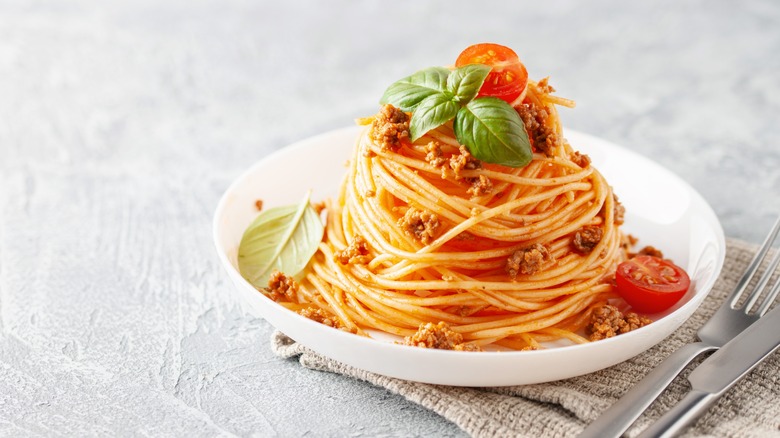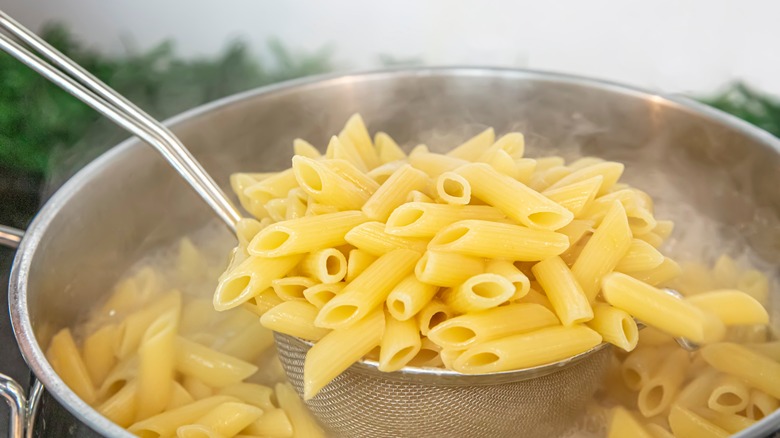The Emergency Pasta Meeting In Italy, Explained
The Italian government is on full alert in the face of a uniquely Italian threat to the country's economy, people, and appetites: Pasta prices are surging. The government wants to know why and how it can temper the rising costs, so Industry Minister Adoflo Urso has called an emergency meeting, Reuters reports.
The issue might not be as pressing as a food shortage, but for one of the world's top pasta-consuming countries (the average Italian eats more than 50 pounds of pasta a year), the 17.5% rise in cost from last spring to this March is a serious economic concern — especially considering Italy's stagnant GDP growth of less than 1% and inflation rates topping 6.1% (via European Commission).
Per Food & Wine, Minister Urso's May 11 meeting with Italy's Rapid Price Alert Commission will also discuss why pasta prices have exploded even though the cost of durum wheat (also known as semolina, the only wheat legally allowed to be used for domestic pasta sold within Italy) has actually been falling. Italy is the largest producer of pasta in the world, exporting more than 2 million tons of pasta for upwards of $4 million in 2022. A spike in prices could threaten one of Italy's most financially and culturally important exports.
Could pasta prices rise in the United States?
Pasta isn't the only thing getting more expensive in Italy, but its rapid price increase well outside the norm is what has caused concerns. The average increase in consumer goods across the board in Italy has been around 8%, putting pasta far above the rest. While this pasta cost crisis is relatively new and so far seems to be uniquely Italian, there is a chance it could spill over into the export market.
In the United States, pasta prices have already been on the rise, along with many other food costs (in fact, inflation has really changed America's eating habits). Spaghetti alone jumped more than 33% in cost between 2021 and 2022 (via Statista), so a sharp increase in prices in Italy would almost certainly get passed along to American consumers if the Italian government isn't able to find a solution.
One solution, if you're a pasta lover, might be to start making your own dried pasta. You can source semolina online and in specialty grocers, but you can also make easy homemade pasta with simple all-purpose flour. It's a pretty easy process, but let's also hope that the Italian government is able to solve this cost crisis so everyone can find convenient, affordable spaghetti wherever they live.

